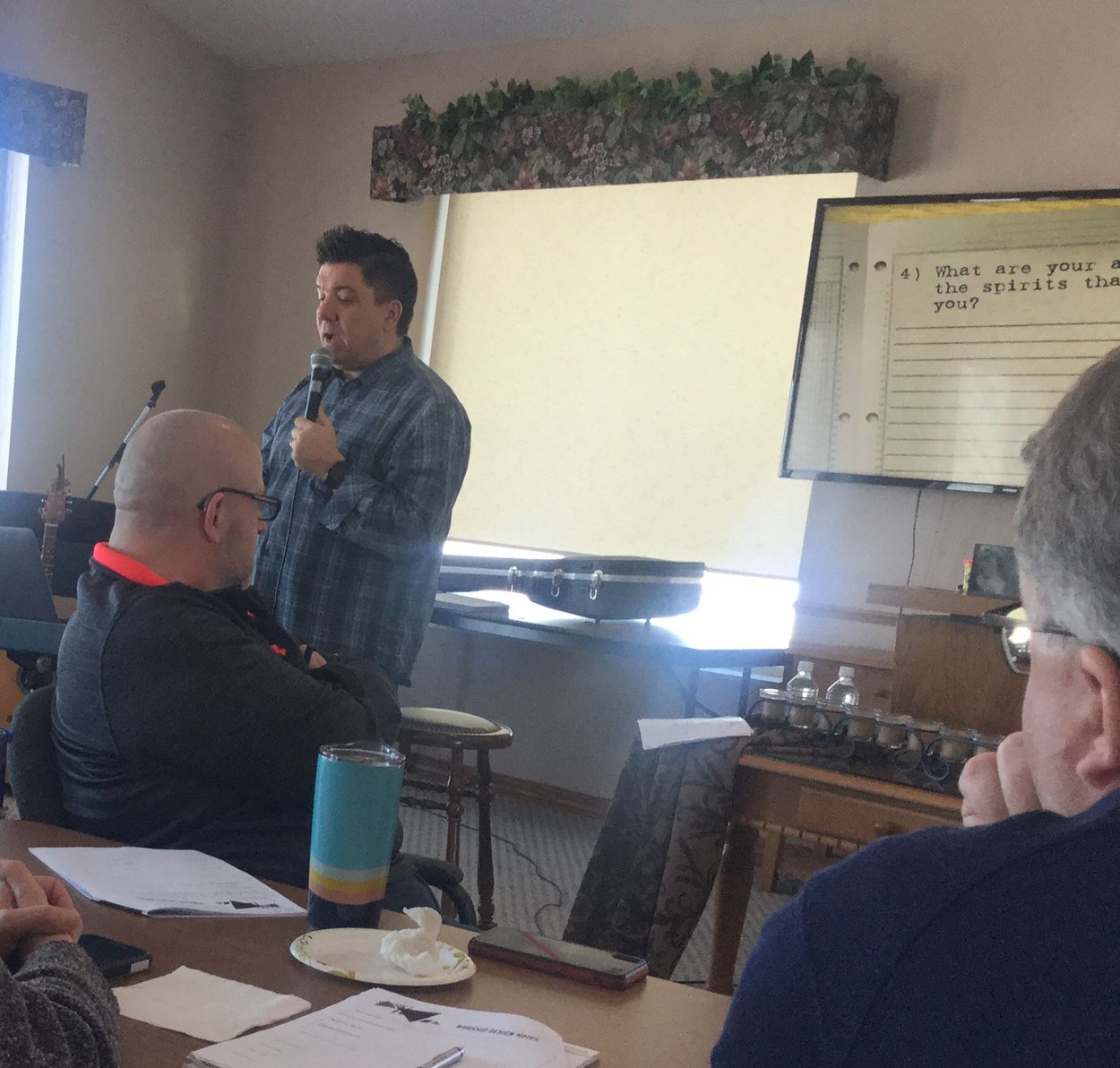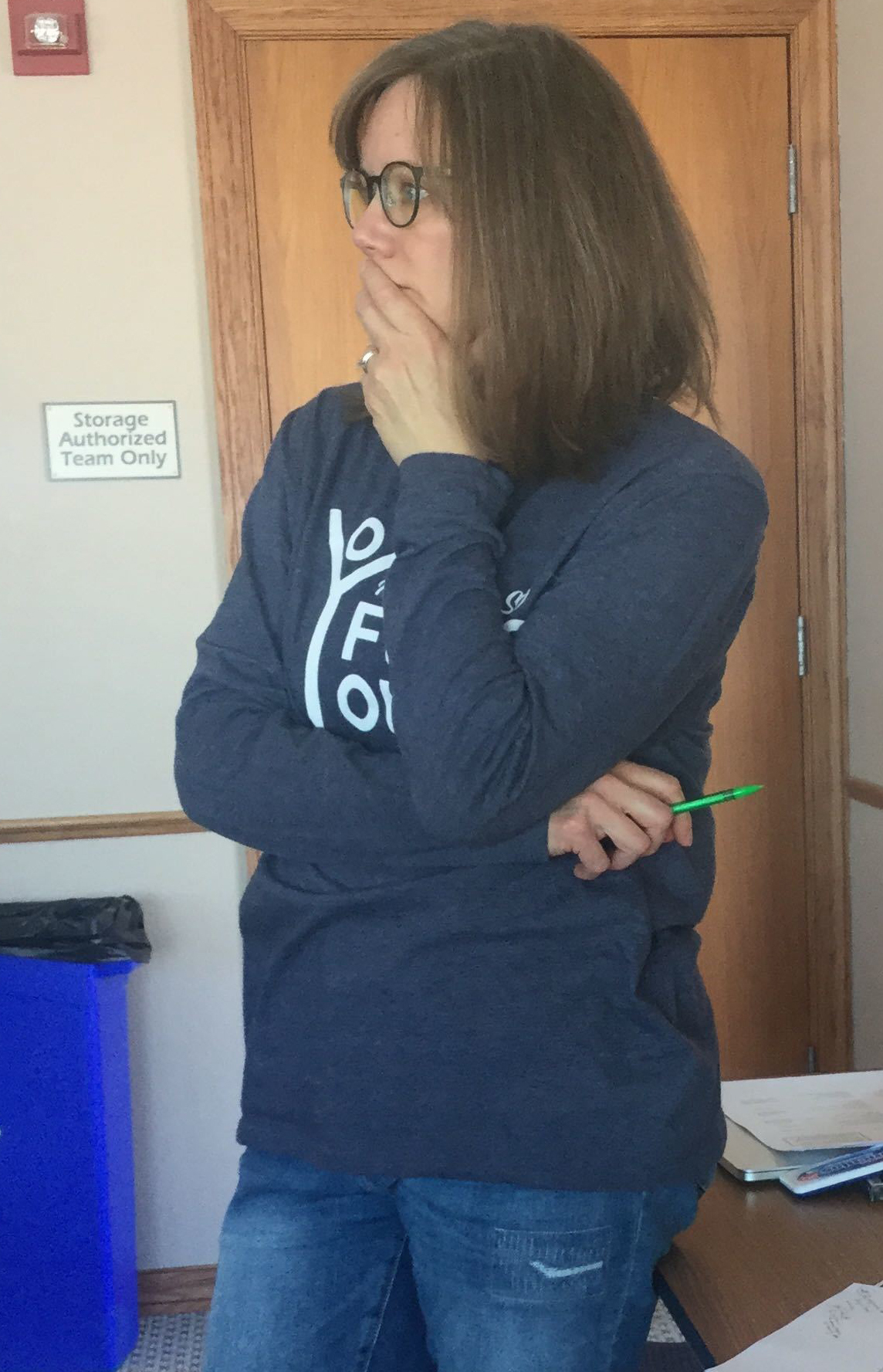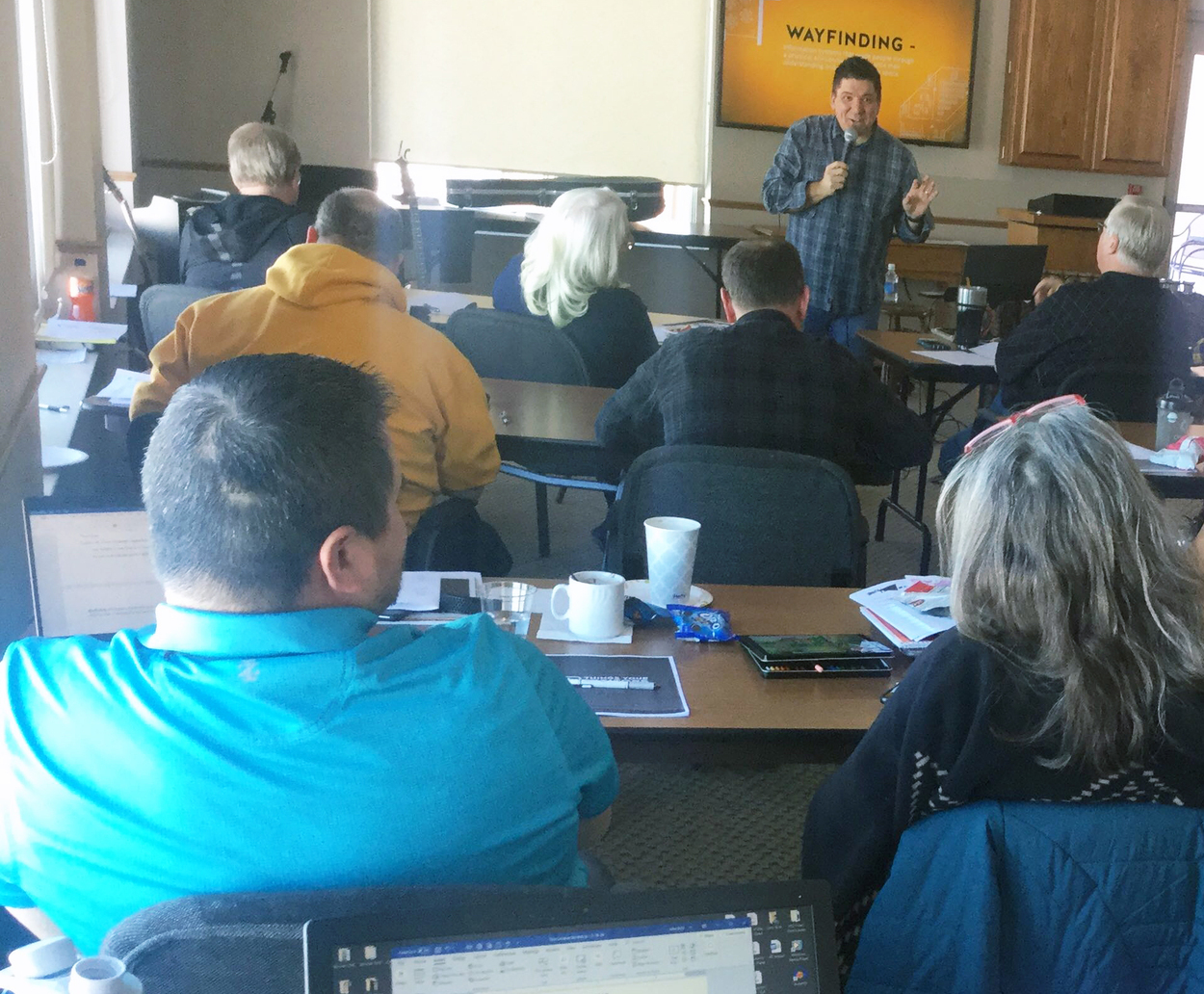
Leaders learn creative ways to design worship

Jason Moore, who is a consultant with Midnight Oil Productions, leads workshops in creative worship design and hospitality, at Lake Poinsett. Photos by Doreen Gosmire, Dakotas UMC.
"We have got to get excited about ministry today and not hold our breath and wait for ministry to happen tomorrow," says Jason Moore. "There is a lot of excitement here in the Dakotas about, what do we do next? Where do we go next?"
Jason Moore, creative designer, and leader of Midnight Oil Productions, conducted three workshops for more than 30 leaders, clergy and lay, at Lake Poinsett.
Moore leads workshops about creative worship design and radical hospitality because of his passion for the United Methodist Church and to reach the next person for Jesus. "I deeply care about the church. The status quo doesn't work. We are trying to live in the past when the church was thriving. I think it is important that we continue to seek out how to make the Gospel work for today."
Rev. Joleen Pietrzak, who serves the congregations of Arlington and Lake Preston in South Dakota, says Moore's workshops were affirming. "Don't be afraid to try something and fail. That is what I tell the congregations I serve. You have to try," she says. "We want to mix visual, audio, and tactile experiences, engage all of the senses in worship."
Moore challenged those in attendance to create a worship experience that leaves an impression and connects the Gospel with today's culture. He says, "We have to figure out what the wineskins are for today. I believe we have to remain true to our core values, but our cultural expression of our core values needs to change constantly. Even if we do traditional worship, we have to change the way we approach worship."
Pietrzak agrees and says that you do not have to abandon who you are, your identity. "You don't have to sacrifice the church culture. Churches do not want to lose their identity, but they want to blossom and grow. It is about finding the balance," she says.
Making things visual is essential, according to Moore. He says visualization creates a lasting impression and is a big part of today's world. Rev. Keith Nelson, who serves First United Methodist Church in Mitchell, South Dakota, came to see how his congregation might connect with a younger generation, and creatively engage people in worship. Nelson is walking away with an awareness of how text-heavy the worship experience can be.
"I use projection during worship like a big piece of paper and put lots of words on the screen. I now realize that I need to be more visual, connect things through images, all of the senses. We need a worship planning team for the congregation. Maybe starting a different type of worship service," says Nelson. "I will be thinking immediately about images. I want to lighten up on the words on the screen."

Rev. Michelle Slott, listens to Jason Moore, presenter on creative worship design during one of the sessions at the Clergy Leadership Academy.
Michelle Slott, who serves at First United Methodist Church in Rapid City, sees the value of imagery and worship as something that helps people live out their call to be a Christian every day.
"Encouraging us to think visually is a concrete way for people to hear the word and connect it with something from today's culture. A way that will remind people when they leave worship, this is what we did on Sunday. This is what Jesus means. This is how I should be living as a Christian," says Slott. "It is important to have reminders in our own lives, daily. I want to give God more of an image or visual that connects with people."
Creating planning or design teams to enhance the worship experience and think collectively is another component that Moore presented, and participants also experienced.
Deb Kjerstad, who serves as the director of leadership development for the Dakotas Conference, sees creative worship design teams as something that all churches can do.
"Jason had a piece on how to create a design team. Some pastors see themselves as having to do it all," says Kjerstad. "We brainstormed together in groups and thought—what if we think of teams beyond our local communities? What if several pastors and others get together and build worship? You have people to brainstorm with, and you can impact several congregations at one time. How can we use the process in a different, unique way? We can create groups across the conference for worship design. It is not about big churches; it is about building what fits your context."
Several participants echoed the power of teams and collaboration. "Working with teams, articulating intentionality around creativity and worship is the next step for me. I want to bring multiple people to the table, like a young person. We can get stuck if we don't have diverse voices," says Rev. Jeff Lathrop, who serves Wesley United Methodist Church in Grand Forks, North Dakota. "I think you get stuck on what the ideal is or should be. It would be best if you started with what can happen. If you have a team, they can help make things happen. The pastor cannot make it happen. We can't be pastor centric. Start small and add more as things develop."
Taking small steps leads to success. "I caution people not to go home and do too much," says Moore. "I ask people to consider the one thing that they will take away and implement. Go home and do one thing well. Take steady steps. Make purposeful, intentional moves."
The United Methodist Church is in a season of tension, liminality, as the 2020 General Conference approaches in May. Moore is optimistic and praises the Dakotas Conference in efforts to stay centered on the mission to make disciples.

Rev. Jeff Lathrop, far left, connects with colleagues, in a design team activity.
"I think it is important to remember that Jesus is still the Lord. God is God, and we are not. Someone asked me a while back what the secret sauce to the church is in today's culture. I think it is about relationships," Moore says. "There is still ministry to do today. The way we do worship still matters. The way we do hospitality still matters. There are a lot of churches in a holding pattern—waiting to see what happens in May. I appreciate the Dakotas Conference because they are still forging ahead with ministry. We are losing people because we are not sharing our transformational message to people who need to hear it. We can't keep doing what we have always done, and we can't hide."
The Creative Worship workshops are part of the Clergy Leadership Academy, CLA. CLA meets twice a year, in a retreat setting, as a way for leaders to connect, learn, and re-energize. The academy focuses on one of the components from Bishop Schnase's book—Five Practices of Fruitful Congregations, during a three-day session. The academy spans over a three-year cycle.
Deb Kjerstad coordinates CLA for the Dakotas Conference, encourages new and experienced clergy to engage in this leadership opportunity.
"We are just ending a three-year cycle and preparing for another to begin the fall of 2020," says Kjerstad. "We bring in outside voices that spur new energy, affirm thinking, and gets people to think outside of the box. There is the power of community. There is power in taking care of yourself, taking time away. We build the experience with the idea of building community, space for relaxation and self-reflection, —alone time, retreat time, and community time."
Contact the Office of Leadership Development by phone 605-990-7796 or email if you have questions or would like further information about Clergy Leadership Academy.